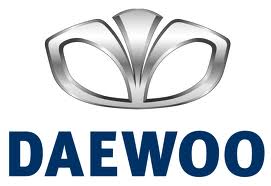Lanos SX Sedan L4-1.6L DOHC D-TEC MFI (2001)

Engine Control Module: Description and Operation
Fuel Control System Operation
FUEL CONTROL SYSTEM OPERATION
The function of the fuel metering system is to deliver the correct amount of fuel to the engine under all operating conditions. The fuel is delivered
to the engine by the individual fuel injectors mounted into the intake manifold near each cylinder.
The two main fuel control sensors are the Manifold Absolute Pressure Sensor (MAP) and the Oxygen Sensor (O2S 1).
The MAP sensor measures or senses the intake manifold vacuum. Under high fuel demands the MAP sensor reads a low vacuum condition, such
as wide open throttle. The powertrain control module (PCM) / Engine Control Module (ECM) uses this information to richen the mixture, thus
increasing the fuel injector on-time, to provide the correct amount of fuel. When decelerating, the vacuum increases. This vacuum change is sensed
by the MAP sensor and read by the PCM/ECM, which then decreases the fuel injector on-time due to the low fuel demand conditions.
The O2S 1 sensor is located in the exhaust manifold. The O2S 1 sensor indicates to the PCM/ECM the amount of oxygen in the exhaust gas and
the PCM/ECM changes the air/fuel ratio to the engine by controlling the fuel injectors. The best air/fuel ratio to minimize exhaust emissions is
14.7 to 1, which allows the catalytic converter to operate most efficiently. Because of the constant measuring and adjusting of the air/fuel ratio, the
fuel injection system is called a "closed loop" system.
The PCM/ECM uses voltage inputs from several sensors to determine how much fuel to provide to the engine. The fuel is delivered under one of
several conditions called "modes".
STARTING MODE
When the ignition is turned ON the PCM/ECM turns the fuel pump relay on for two seconds. The fuel pump then builds fuel pressure. The
PCM/ECM also checks the Engine Coolant Temperature Sensor (ECT) and the Throttle Position Sensor (TP) and determines the proper
air/fuel ratio for starting the engine. This ranges from 1.5 to 1 at -36°C (-33°F) coolant temperature to 14.7 to 1 at 94°C (201°F) coolant
temperature. The PCM/ECM controls the amount of fuel delivered in the starting mode by changing how long the fuel injector is turned on and
off. This is done by "pulsing" the fuel injectors for very short times.
CLEAR FLOOD MODE
If the engine floods with excessive fuel, it may be cleared by pushing the accelerator pedal down all the way. The PCM/ECM will then
completely turn off the fuel by eliminating any fuel injector signal. The PCM/ECM holds this injector rate as long as the throttle stays wide
open and the engine is below approximately 400 RPM. If the throttle position becomes less than approximately 80% open, the PCM/ECM
returns to the starting mode.
RUN MODE
The run mode has two conditions called "open loop" and "closed loop".
Open Loop
When the engine is first started and it is above 400 RPM, the system goes into "open loop" operation. In "open loop", the PCM/ECM
ignores the signal from the O2S 1 and calculates the air/fuel ratio based on inputs from the ECT and MAP sensors. The sensor stays in
"open loop" until the following conditions are met:
-
The O2S 1 sensor has a varying voltage output, showing that it is hot enough to operate properly.
-
The ECT sensor is above a specified temperature.
-
A specific amount of time has elapsed after starting the engine.
Closed Loop
The specific values for the above conditions vary with different engines and are stored in the electrically erasable programmable read-only
memory (EEPROM). When these conditions are met, the system goes into "closed loop" ope. In "closed loop", the PCM/ECM calculates
the air/fuel ratio (fuel injector on-time) based on the signal from the Oxygen Sensor. This allows the air/fuel ratio to stay very close to 14.7
to 1.
ACCELERATION MODE
The PCM/ECM responds to rapid changes in throttle position and air flow and provides extra fuel.
DECELERATION MODE
The PCM/ECM responds to changes in throttle position and air flow and reduces the amount of fuel. When deceleration is very fast, the
PCM/ECM can cut off fuel completely for short periods of time.
BATTERY VOLTAGE CORRECTION MODE
When battery voltage is low, the PCM/ECM can compensate for a weak spark delivered by the ignition module by using the following
methods:
-
Increasing the fuel injector pulse width.
-
Increasing the idle speed RPM.
-
Increasing the ignition dwell time.
